We started out early from Nottingham eager to reach Stratford Upon Avon as soon as possible because it was the day we were visiting the birthplace and burial place of the poet and playwright William Shakespeare -the national poet of England, the greatest English ‘literatteurs’ of all times. For me, this wasn’t just another stop on the map; it was a literary pilgrimage. I wouldn’t claim to know every line Shakespeare ever wrote or call myself a great scholar of his works, but his words have been a part of my student and teaching life for nearly half of my lifetime. So, visiting the place where it all began felt deeply personal.

Reasons for visiting Stratford -Upon -Avon
While many tourists flock to the UK to marvel at Buckingham Palace, the London Eye, Madame Tussauds, Harrods, Windsor Castle, or even Stonehenge, my journey had a different purpose. Of course, it wasn’t that I was disinterested in those iconic sights, but my heart was set on something more personal — to walk through the literature and history, especially English literature and history, I had cherished all my life. I had carefully crafted an itinerary that revolved around authors’ homes, literary museums and tours of places that brought beloved English books and movies to life.
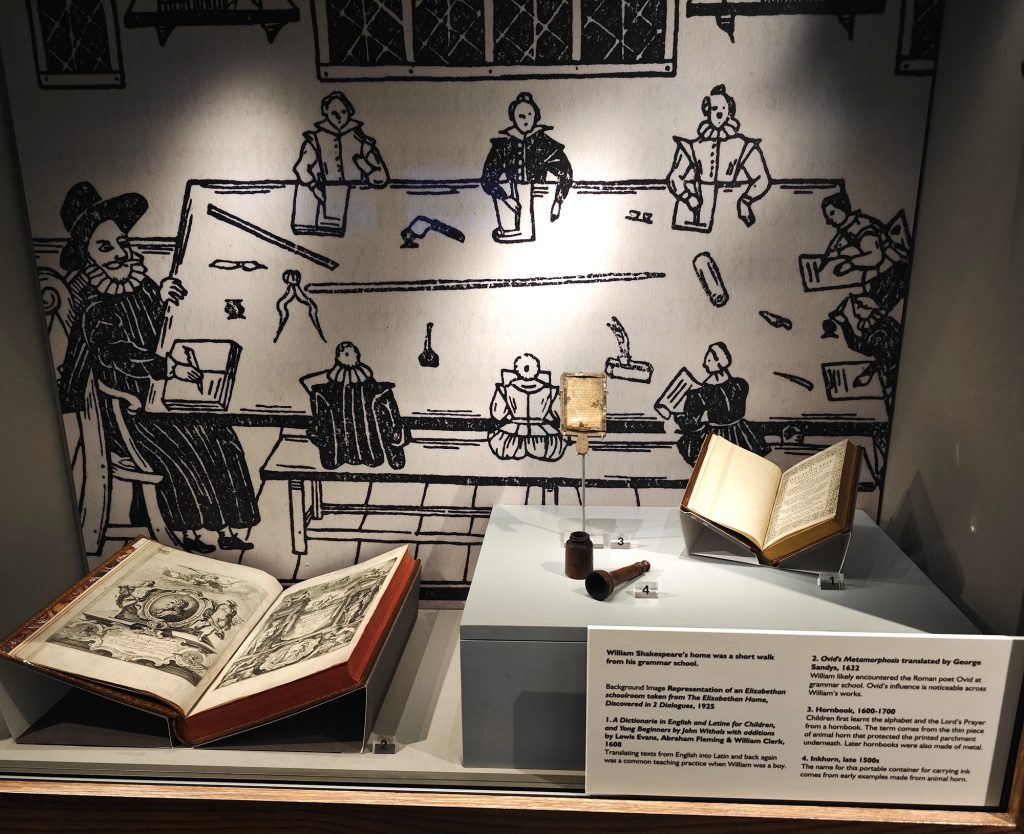
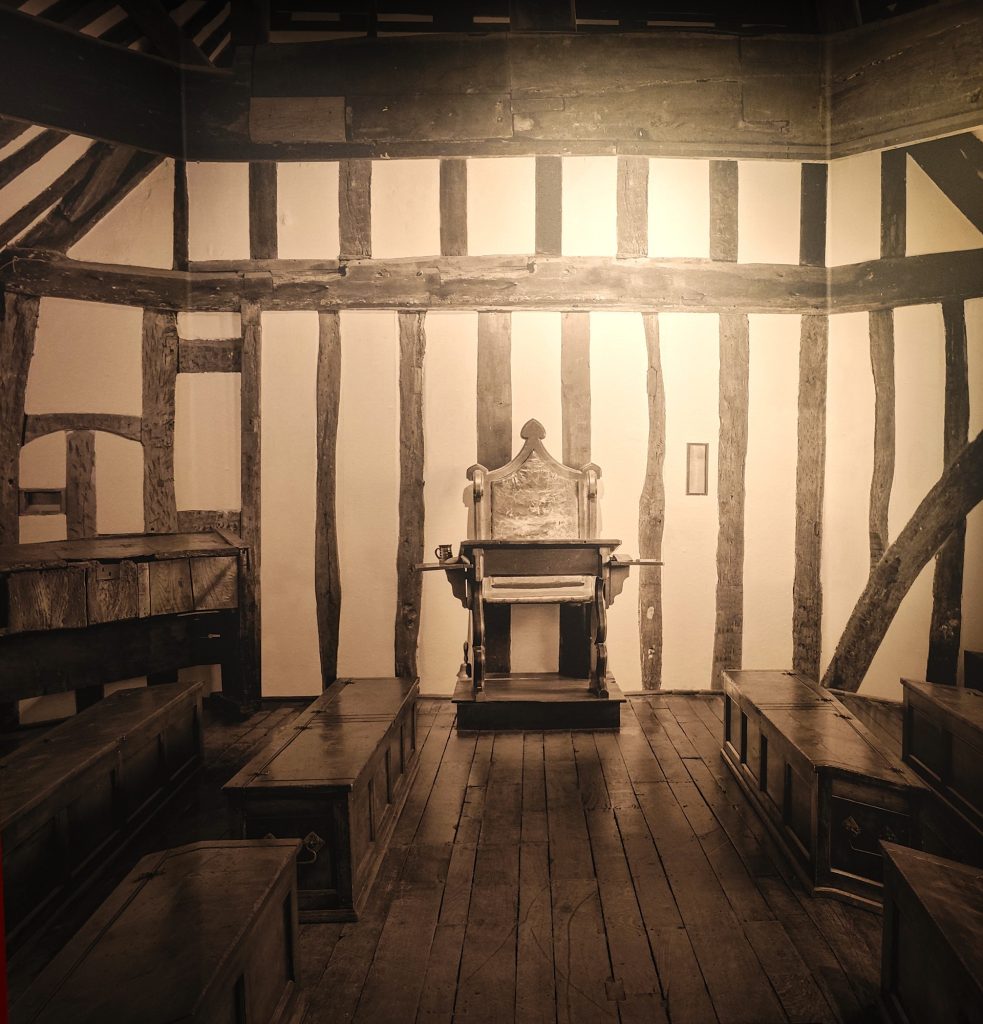

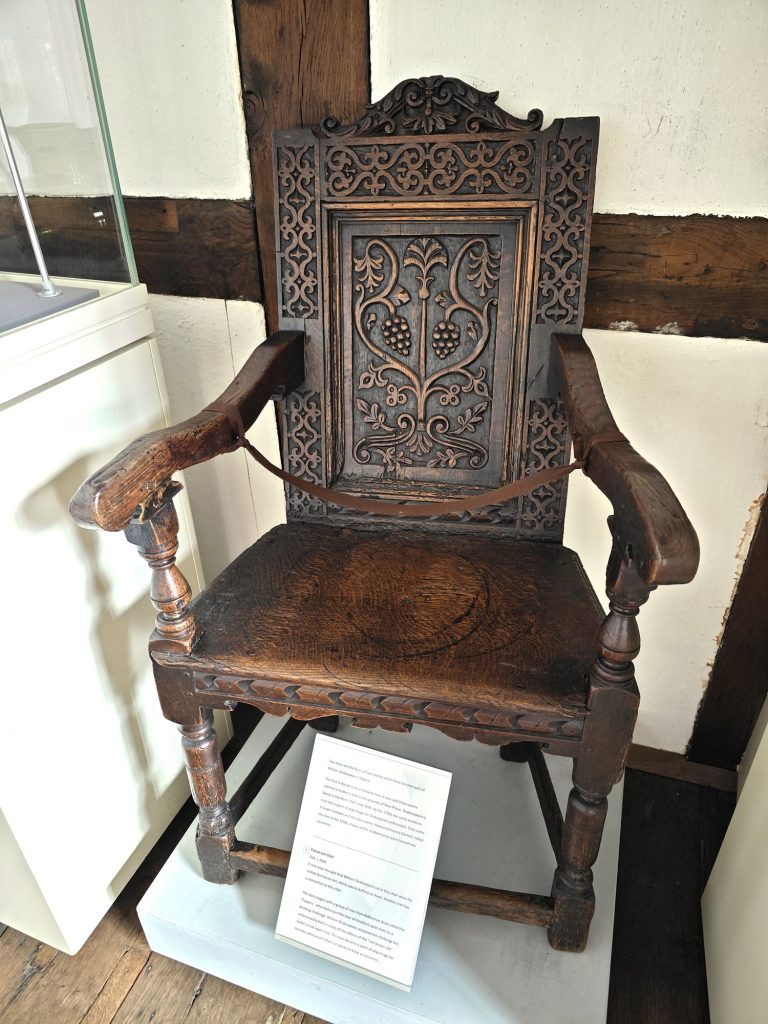

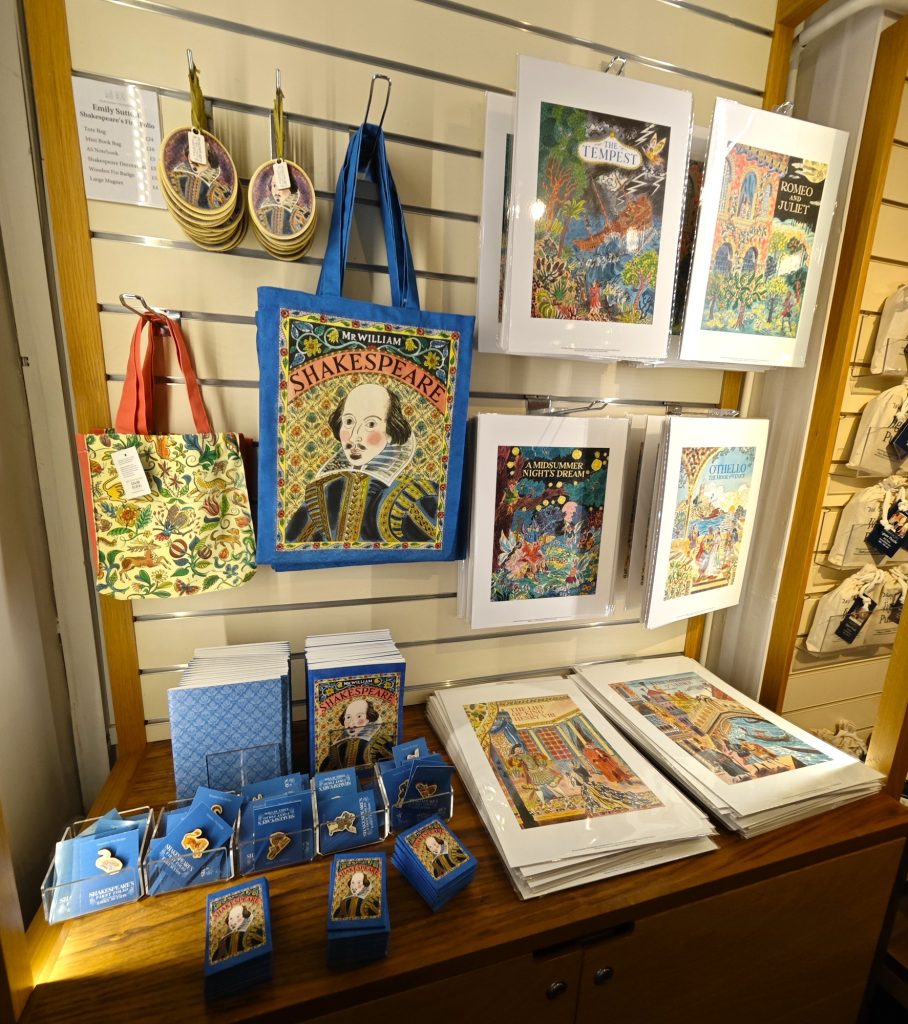
For me, this trip wasn’t just sightseeing; it was stepping into the worlds that had shaped my imagination. The homes of Sherlock Holmes and Charles Dickens were far more alluring to me than the London Eye or the London Dungeon. Strolling through the Jane Austen Centre or exploring Mary Shelley’s Frankenstein Museum in Bath felt infinitely more meaningful than visiting the Roman Baths — though, of course, those too are steeped in fascinating history. Yet, anything connected to English literature and the stories that had captivated me for years always held a special, almost magical place in my heart.

So it was with this frame of mind , with this suppressed excitement that we reached Stratford -Upon- Avon. Setting foot in the small town was like entering a magical world -unbelievable to me that I was about to see the house and neighborhood in which William Shakespeare was born!

History of Stratford -Upon -Avon
Stratford-upon-Avon, often just called Stratford , situated on the River Avon, is a charming market town in Warwickshire, in England’s West Midlands . Way before Shakespeare‘s time it was a tiny village originally inhabited first by the Britons and then by the Anglo-Saxons. In 1196 Stratford was granted a charter by King Richard I to expand into a market town from which it flourished into the town it is today. Of course, Stratford is known far beyond its markets, being the birthplace of the great William Shakespeare, lovingly known as the Bard ! Visiting the place, you get a glimpse not only of Shakespeare‘s life in particular but also of the Tudor period ( 1485-1603 AD)in history, blended with the charm of a quintessential English village.

Things to do there
There are many buildings and sites associated with Shakespeare at Stratford. Being a small place you can easily cover all these places in a day. Here’s a list of all the nearby historic attractions:
Shakespeare’s Birthplace
Shakespeare’s Schoolroom & Guildhall
Shakespeare’s New Place
Tudor World
Hall’s Croft
Nash’s House
Holy Trinity Church
Anne Hathaway’s Cottage
Mary Arden’s House
Though I couldn’t visit all of the places I will give an idea of each place as briefly as possible.
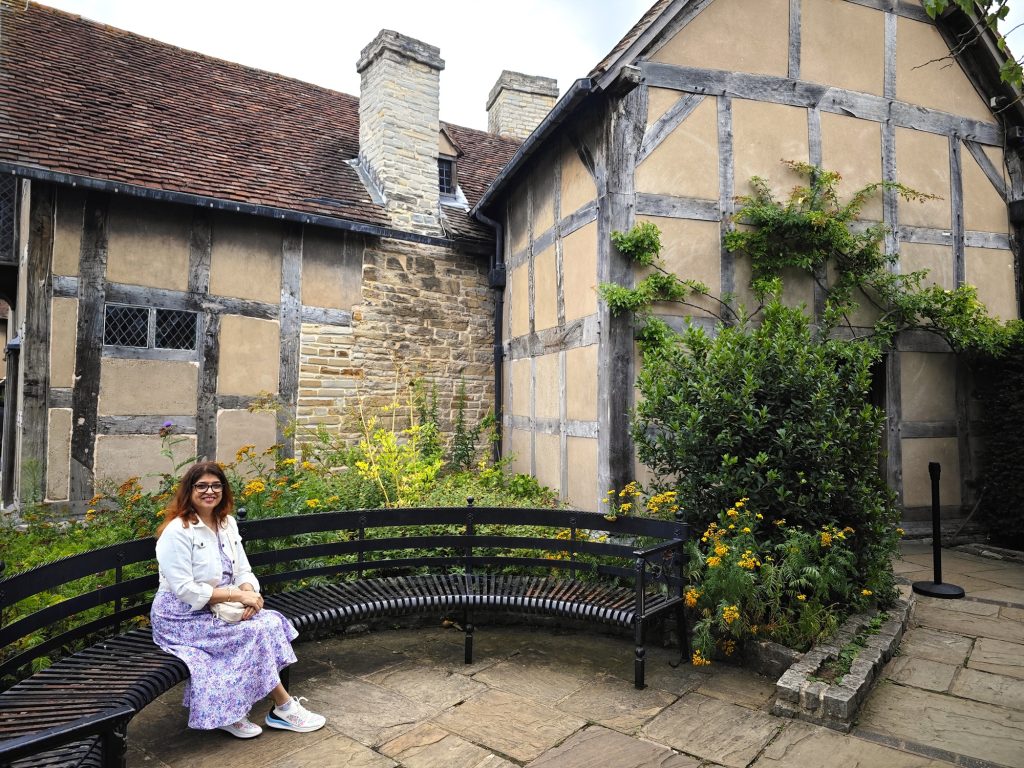
Shakepeare’s Birthplace
Our first stop was Shakespeare’s birth home on Henley Street just in the heart of Stratford-upon-Avon. I got goosebumps just looking up at the 16th century modest brown and tan half timbered house where the Shakespeares had once lived and laughed! My overdriven imagination started to work , visualizing how the Bard’s life must have been when he was young in that fascinating house in front of me ! While entering through the passage that leads to the house you see some of the real objects from the Shakespeare Birthplace Trust’s collection up close which make the whole experience feel real and intimate.
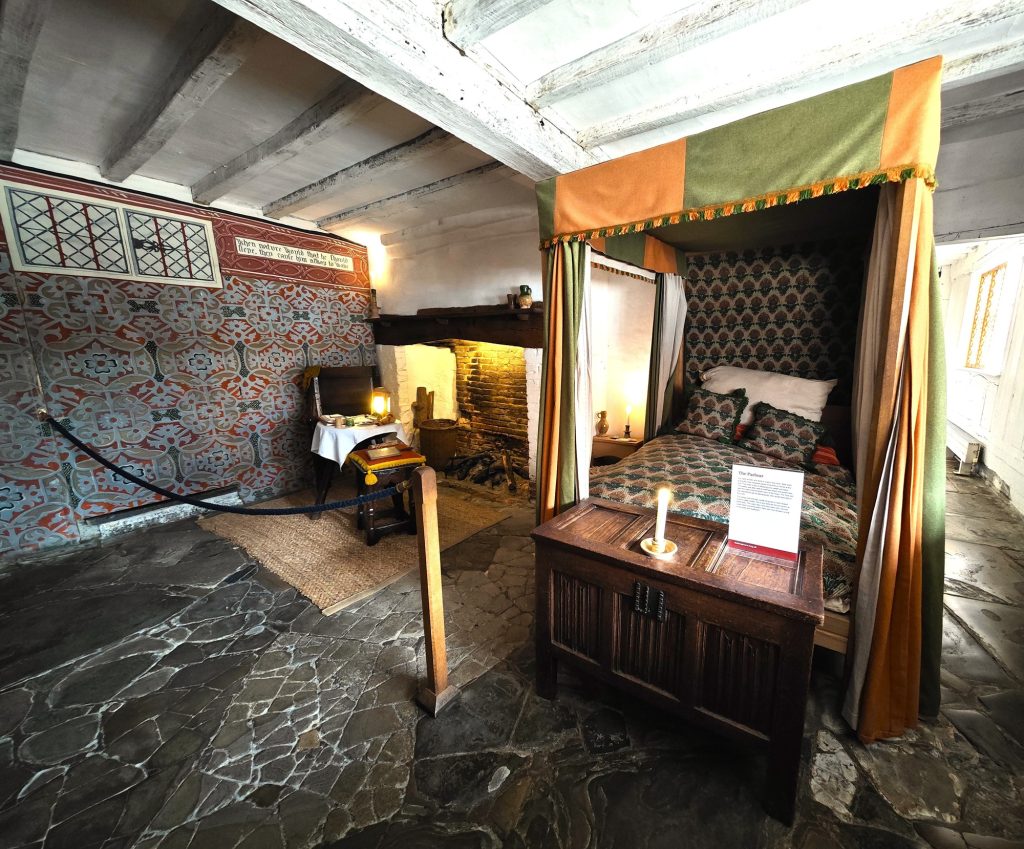
John Shakespeare, William’s father, worked as a glovemaker and lived in the little house that’s now known as Shakespeare’s Birthplace. Around 1557, he married Mary Arden, and a few years later, in 1564, their son William was born. He was the third of eight children and the first boy in the family. Sadly, his two elder sisters passed away as babies, so William was the first child to survive beyond infancy.
In 1568, John Shakespeare became the high bailiff of Stratford—a very respected position in the town at the time. Because of his father’s good standing, young William was fortunate enough to go to the local grammar school, where he learned Latin, literature, and the classics.

Structure of the house
The house is built in typical Tudor style : timber-frame, wattle and daub infill. This means the main structure of the house was made from large wooden beams – usually oak. The beams formed the skeleton of the house – clearly seen from the outside as dark wooden lines crisscrossing the walls. These frames were incredibly strong and flexible, helping the houses survive for centuries.
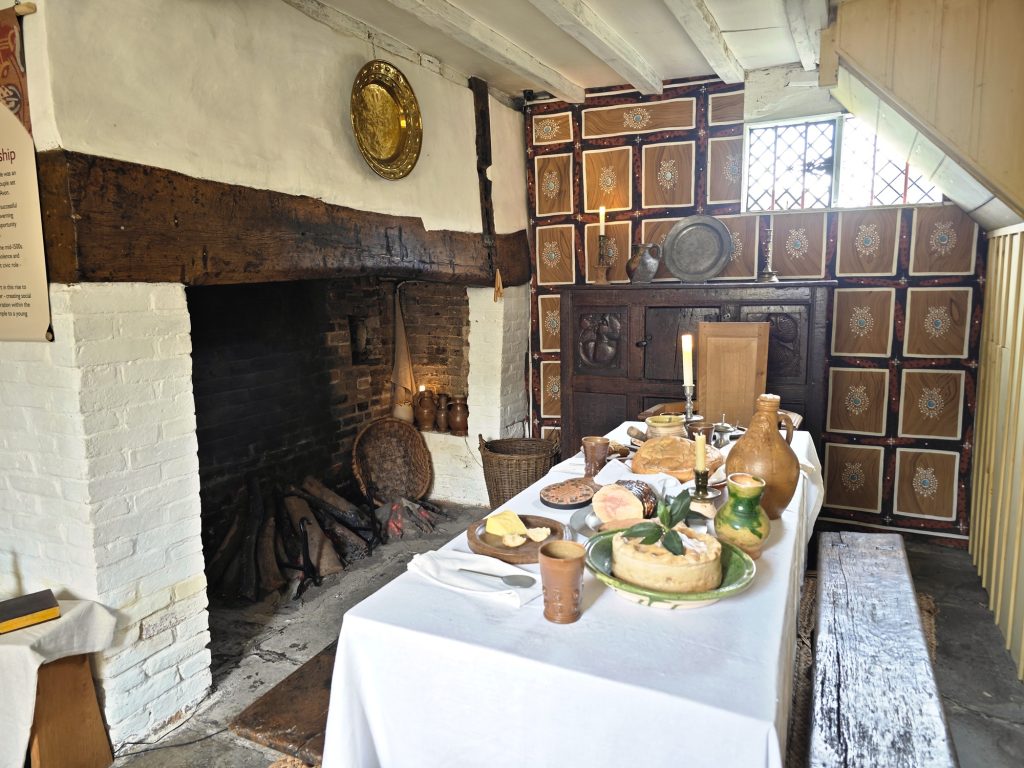
The spaces between those wooden beams were filled with wattle and daub. Wattle is a woven lattice of thin wooden sticks or reeds, kind of like a basket pattern. Daub is a mixture of clay, soil, straw, animal dung and water that was smeared over the wattle to seal it and create a wall surface. Once it dried, it became quite solid .Then it was whitewashed with lime to give that familiar black-and-white Tudor look. In short the walls between the beams were made of woven sticks covered in a clay mixture, then painted white – a hallmark of 16th-century English architecture.
The house has two floors, and as soon as I stepped inside, I, along with other visitors, were greeted by friendly guides stationed in every room. The guides , all volunteers, bring the place to life with lively conversations and fascinating stories about Shakespeare’s family—how they lived, what daily life was like in young William’s time, and little anecdotes that make you feel as if the Shakespeares have just stepped out for a moment.
Highlights of the house
Here are 5 must-see highlights inside Shakespeare’s Birthplace:
As I have said earlier the house was two storied and the ground floor was where both daily , important family and business matters were held. After entering through a narrow door we first came to the Parlor room.
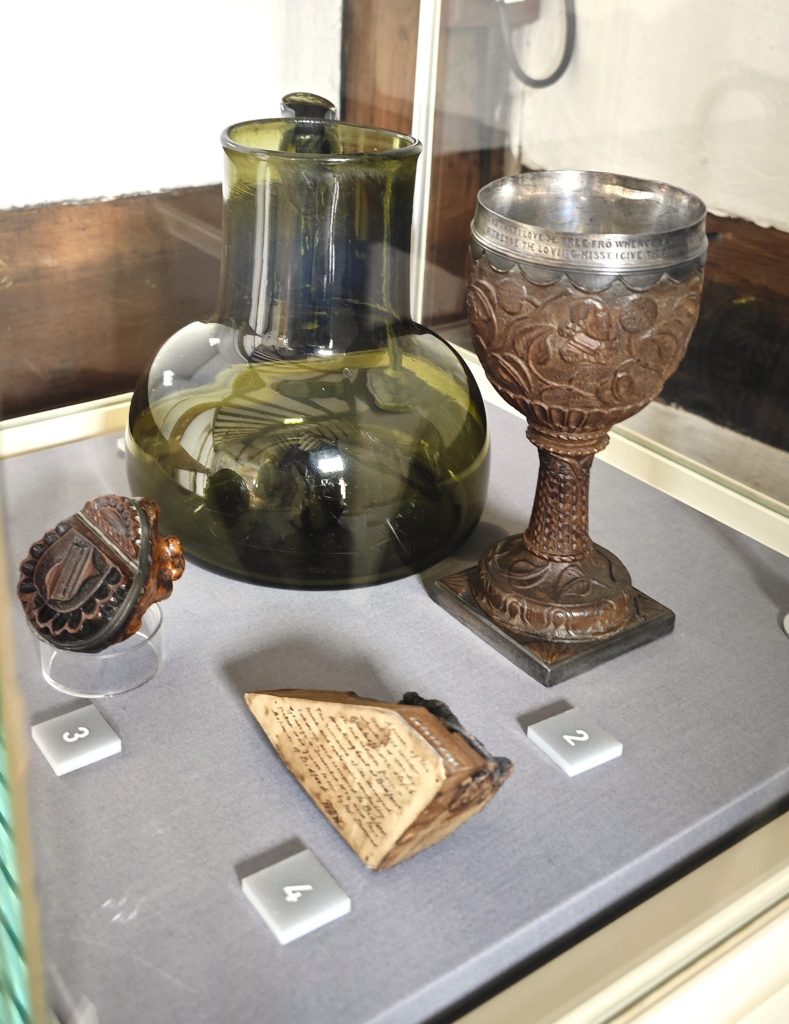
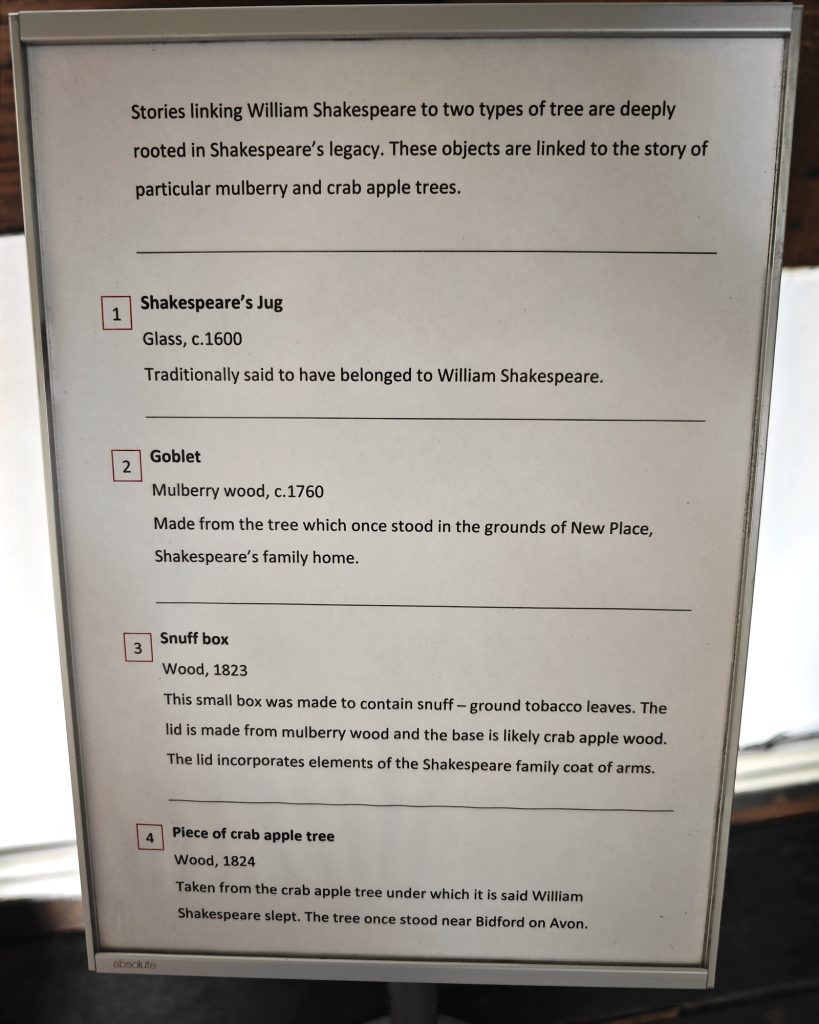
The ‘Parlour’ on the ground floor was the best room on that floor , where guests were received, and evening gatherings were held. There was a large open fireplace, oak furniture, benches and tables arranged as a dining space and one of the notable pieces was the ‘best bed’ used for occasional guests — a sign of wealth and comfort in Tudor times. There were also period-style wall hangings, jugs used for night-use (before modern bathrooms), and the original stone floor in parts. The stone-flagged floor in the parlor was literally the floor that William Shakespeare once walked on.
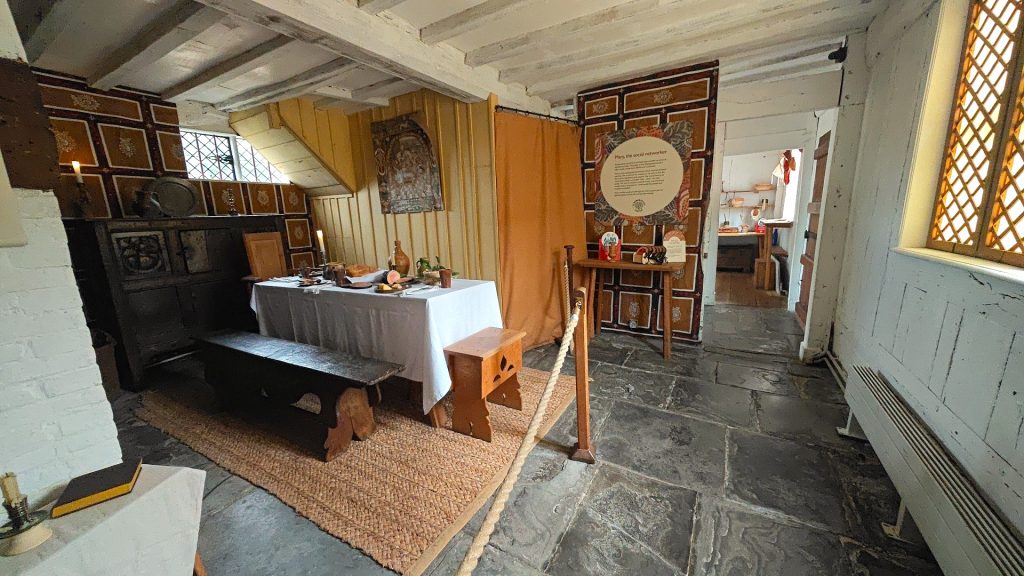
This room was the central hub of daily life: meals, family time, the heart of the home. According to the displays explaining Tudor eating habits- pointed out by the informative guide- the main meal of the day was around 11 am and involved several shared dishes given their social standing.
Another room on the ground floor was John Shakespeare’s Workshop -the part of the house used for business. John Shakespeare-William’s father-made gloves (he was a glover and wool-dealer). The room is filled with tools, bits of leather and wooden molds, all laid out just as they might have been in the 1500s. We could see the workshop set-up: tools, leather-working pieces, displays of what the shop window might have looked like from Henley Street where gloves were sold.

After exploring the ground floor I climbed a flight of narrow stairs to reach the first floor. The first floor consisted of bedrooms and the ‘Birth-Room‘. The three main chambers were the parents’ bedroom, the children’s bedrooms – one for the boys and one for their sister- and an attic/storage space above for wool or skins, and quarters for apprentices of the glove-making business. Here again were volunteer guides engaging us in interesting tidbits about these particular rooms adorned with replica beds and furnishings styled from the period.
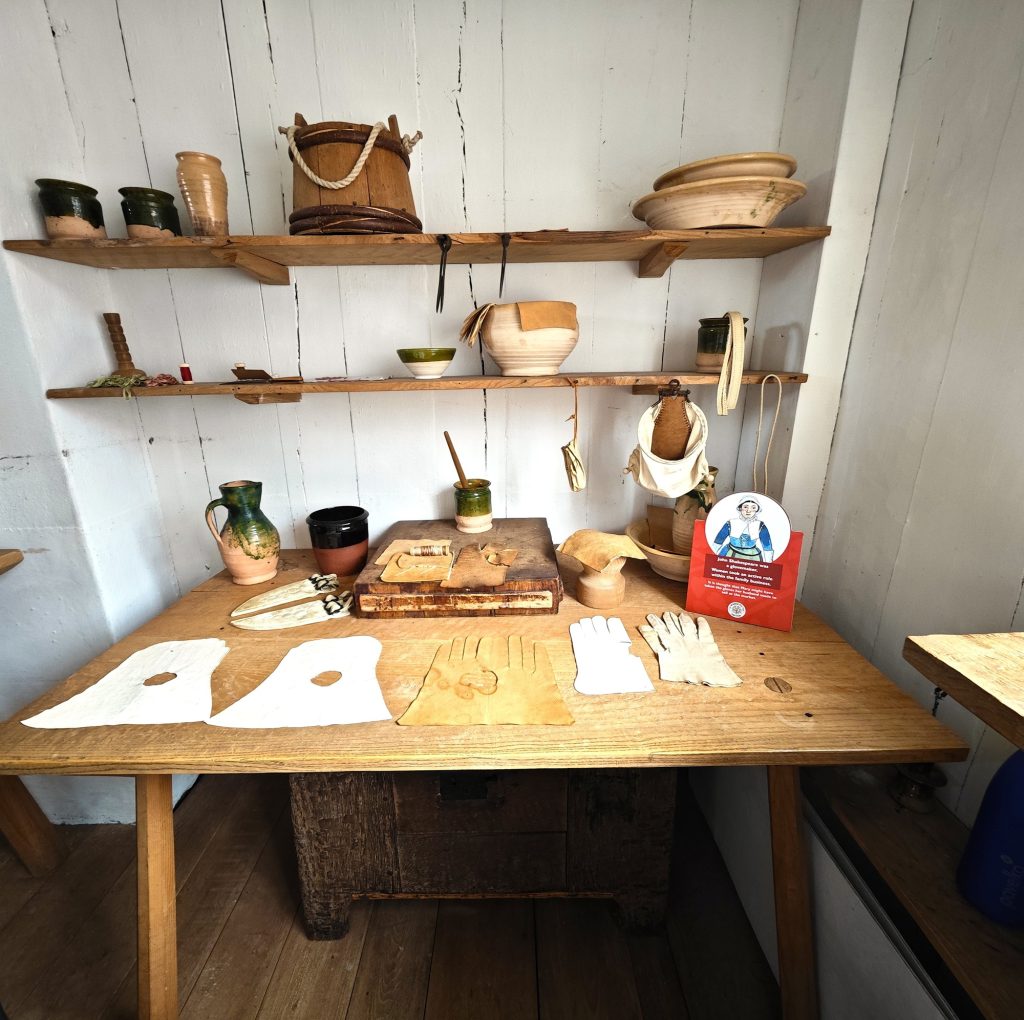
The star of the house on this floor was the ‘Birth Room‘ which is actually John and Mary‘s bedroom -the parent’s bedroom, where Shakespeare is believed to have been born in 1564. It is situated on the western side of the house, facing the front from the street. In the 1500s, it was common for the parents’ main bedroom to also serve as the birthing room, because babies were usually delivered at home, in the warmest, most comfortable room. There was a four-poster bed near the window and a cradle on the other side next to it.

English learning lessons
A unique feature on these beds were thick ropes strung around them. Asking the delightful guide what they were, I got some valuable insight into some modern day phrases -though not coined by Shakespeare himself. She explained to us that in Shakespeare’s time, beds didn’t have the solid wooden or metal frames we use today. Instead, the mattress rested on a lattice of interwoven ropes strung across the bed frame. Over time, those ropes would loosen or sag under the sleeper’s weight. To keep the mattress firm and comfortable, people used a bed key (a special wooden tool) to tighten the ropes regularly. This made the bed sturdier and more supportive — basically the 16th-century version of adjusting your mattress firmness! The phrase ‘Sleep tight‘ is commonly believed to have originated from this practice. ‘Sleep tight’, meant sleep well, but originally might have referred to sleeping on a bed with tightly pulled ropes. Now who doesn’t know the old rhyme, ‘Good night, sleep tight, don’t let the bedbugs bite’!

Another well known phrase which she explained was ‘Hit the sack‘ or ‘Hit the hay‘. While these phrases came much later, they echo sleeping habits from Shakespeare’s time, when mattresses were stuffed with straw or hay. So while Shakespeare wouldn’t have used the phrase, the image comes directly from his domestic world.
Apart from the bedrooms and attic was the ‘Hall Chamber”’— the room next to the Birth Room, where we noticed lesson boards, quills, slates, and other school-related objects on display. This section was proof of what Shakespeare‘s early education might have been like — from quills and ink pots to Latin books and lesson boards, it was a lovely glimpse into the kind of strict but formative schooling that shaped his brilliant mind. I could see with my mind’s eye the creation of a Macbeth or a Rosalind or the passionate sonnets of later years !
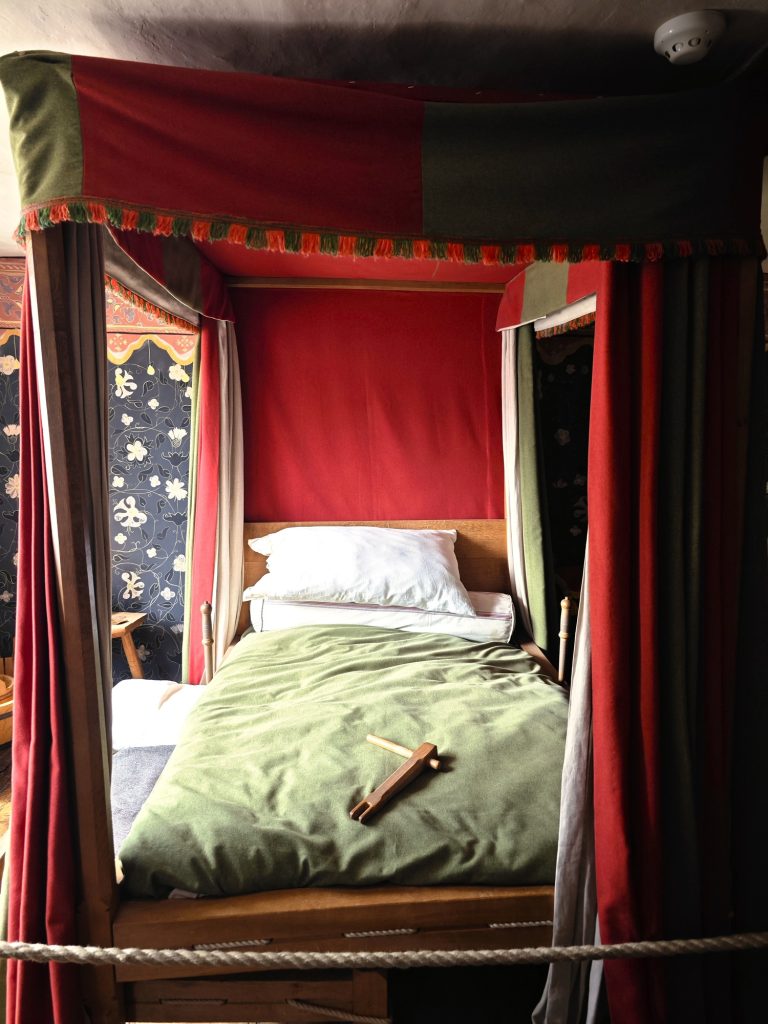
What a goosebump inducing experience it was, being a part of Shakespeare’s world ! There was still more to come. After exploring the house and its Tudor era knickknacks I went out into the charming walled garden with plants, herbs and flowers mentioned in Shakespeare’s plays -lavender, rosemary and thyme. It was a quiet, beautiful spot to sit for a moment and reflect after visiting the interior.

Shakespeare’s School and Guildhall
After the tour of Shakespeare’s Birthplace I went out to explore Henley Street. Just a few feet from the house was the statue of Shakespeare where an actor dressed in ‘doublet and hose’ was acting out lines from Shakespeare’s plays trying to earn some money out of it.
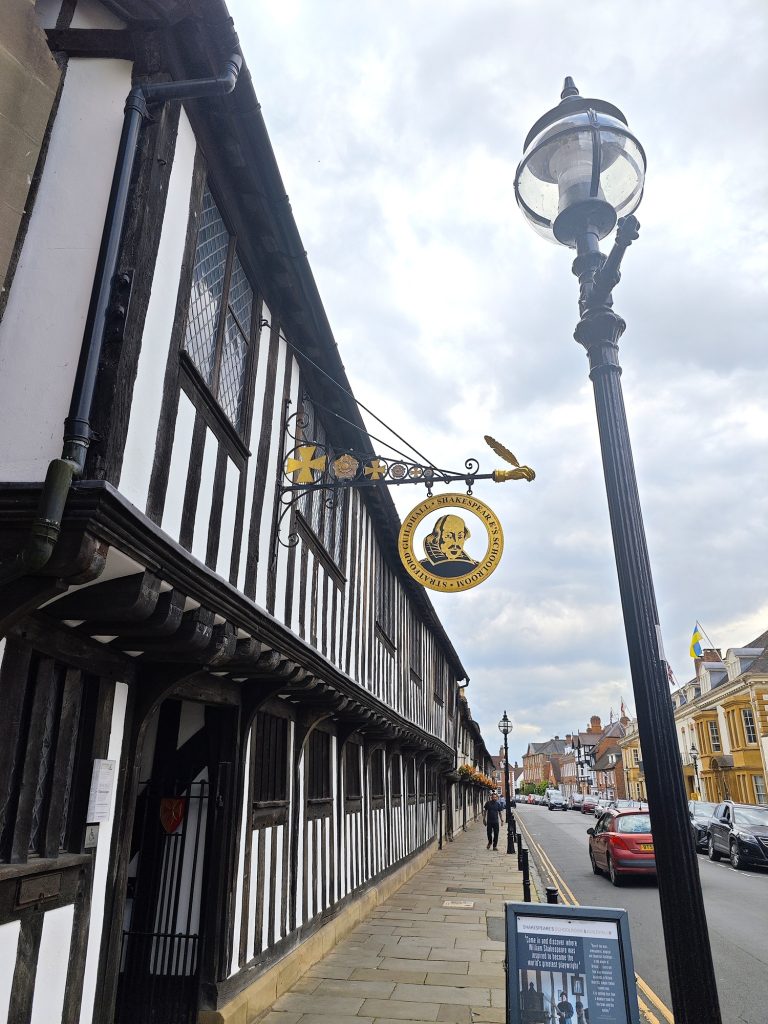
Walk 5 minutes south along Henley Street, then right onto Church Street and you reach Shakespeare’s School and Guildhall along with its adjacent chapel. On the ground floor is the Guildhall- the civic hall, meeting place, later courtroom where John Shakespeare worked as an alderman.
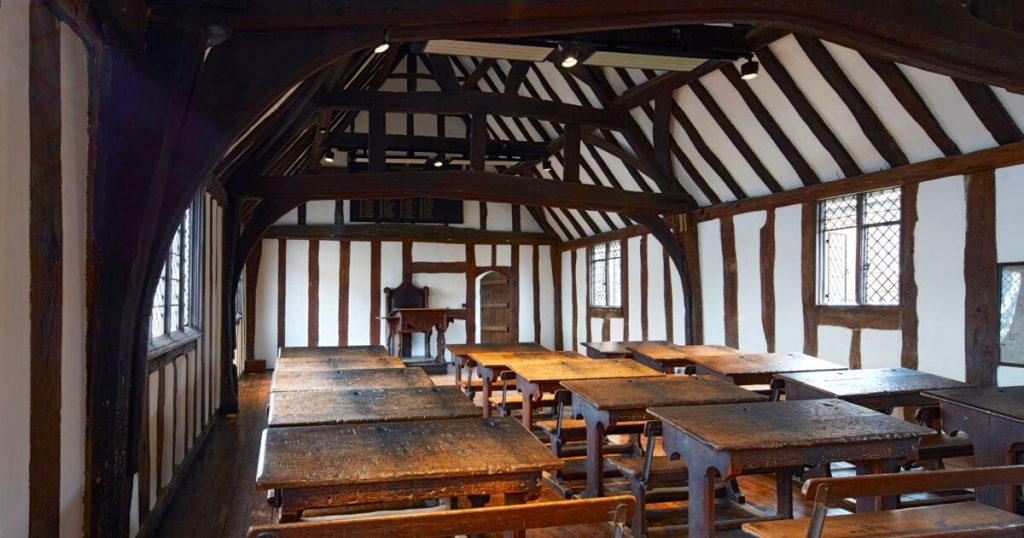
The upper floor was the Schoolroom (Classroom) for the King’s New School where William Shakespeare studied. In the Tudor classroom a costumed actor plays the part of a very strict Tudor schoolmaster and illustrates what life was like for schoolboys like young William Shakespeare. Some of the furniture was original, including a worn Tudor school desk and a long desk. Also on the first floor is the Master’s Chamber, the schoolmaster’s private quarters. Occupying the centre of the chamber is the prefect’s table, carved with the names and initials of schoolboys spanning hundreds of years.

Immediately beside Schoolroom and Guild is the Guildhall Chapel, which boasts a superb set of medieval wall paintings including ‘Doom‘, a depiction of the Biblical Day of Judgement over the chancel arch.
Other houses to visit
A few steps along Church Street from Shakespeare’s Schoolroom entrance is a very attractive row of medieval almshouses.
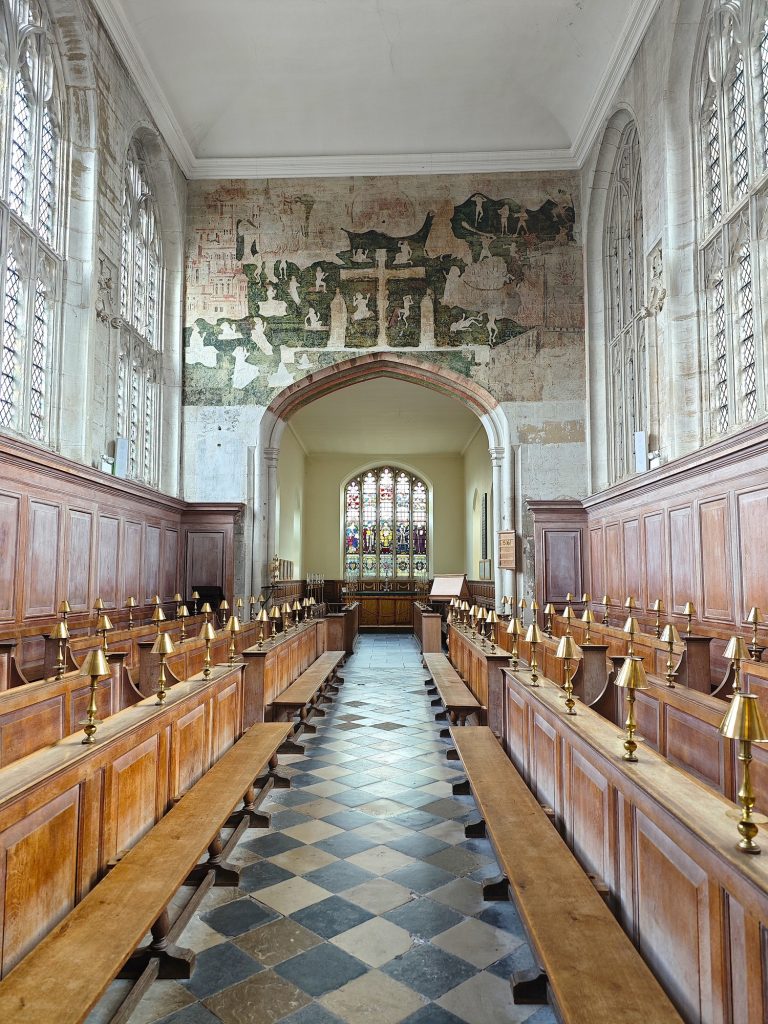
A short 2-minute stroll south brings you to the site of Shakespeare’s final home, known as the New Place. Although the original house was demolished in the 1700s, the site is preserved as a beautiful garden and sculpture park, representing his later life and creativity. This is the place where Shakespeare spent his retirement years.
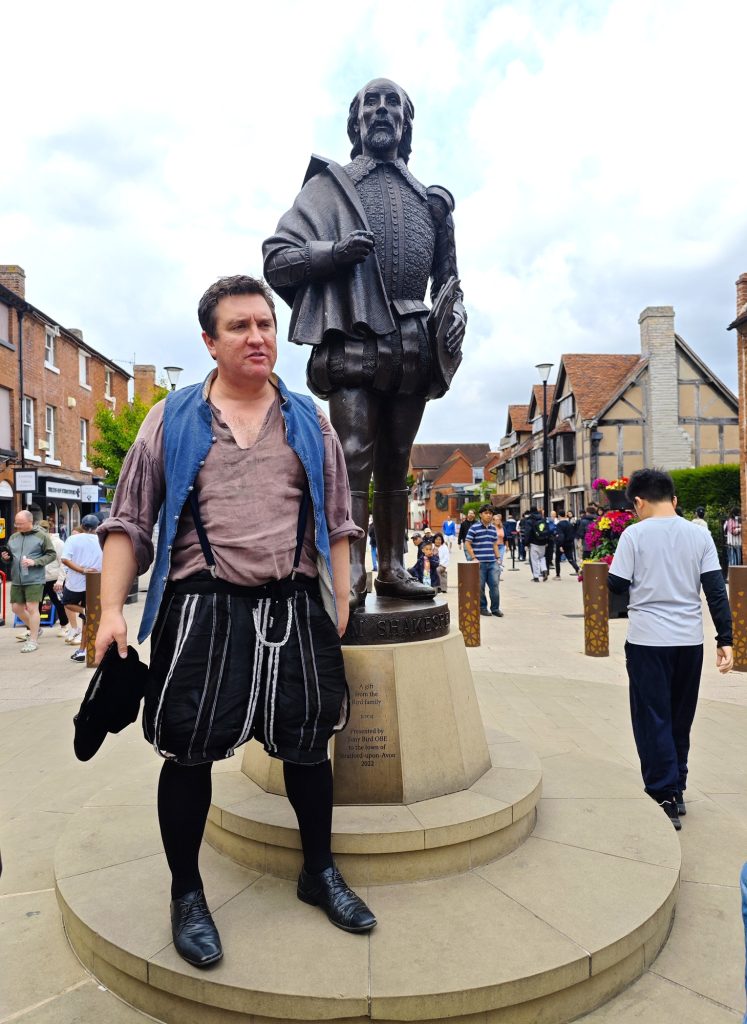
Next door you’ll find Nash’s House, once owned by Shakespeare’s granddaughter Elizabeth Hall.
Continue south along Chapel Street into Old Town and you’ll reach Hall’s Croft . This was the home of Dr. John Hall, who married Shakespeare’s daughter Susanna. Inside you will see Elizabethan furniture, medical instruments from Dr. Hall’s practice, a tranquil garden with herbs used for remedies. It’s one of the most elegant houses in Stratford.
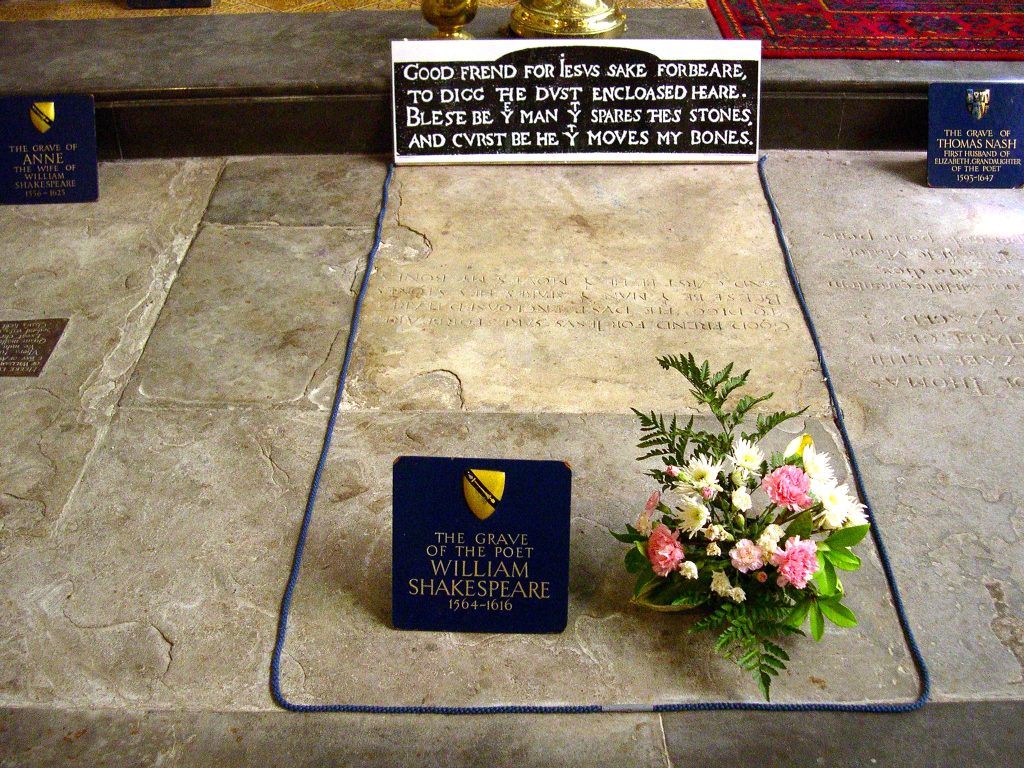
Trinity Church and River Avon
Keep walking down Old Town until you reach the River Avon, and the Holy Trinity Church set among willows by the water. This is where Shakespeare was baptized (1564) and buried (1616). Inside, there is a memorial bust near the altar and stained glass windows celebrating his works. You can see his grave, marked with his famous inscription :
‘Good frend for Jesus sake forbeare,
To digg the dust encloased heare;
Bleste be the man that spares thes stones,
And curst be he that moves my bones.’
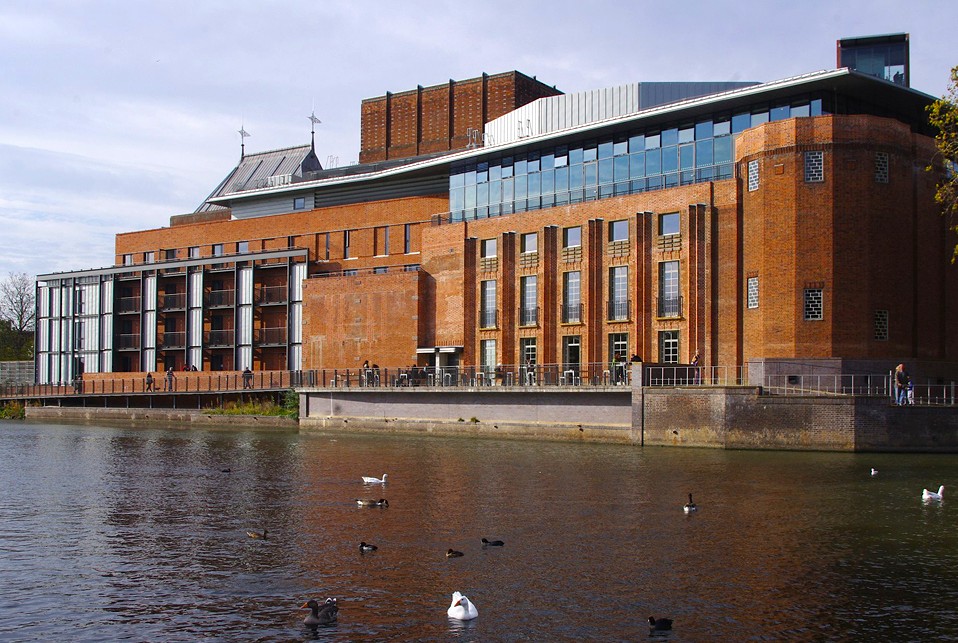
Leaving the church, stroll along the Avon River path back toward the town centre. You’ll pass riverside gardens and swans, the Royal Shakespeare Theatre and Swan Theatre and Clopton Bridge .
To relish more of Shakespeare’s world you can visit Anne Hathaway’s Cottage and Mary Arden’s Cottage both of which are a few miles away from the historic town centre. Due to lack of time we had to skip these two.
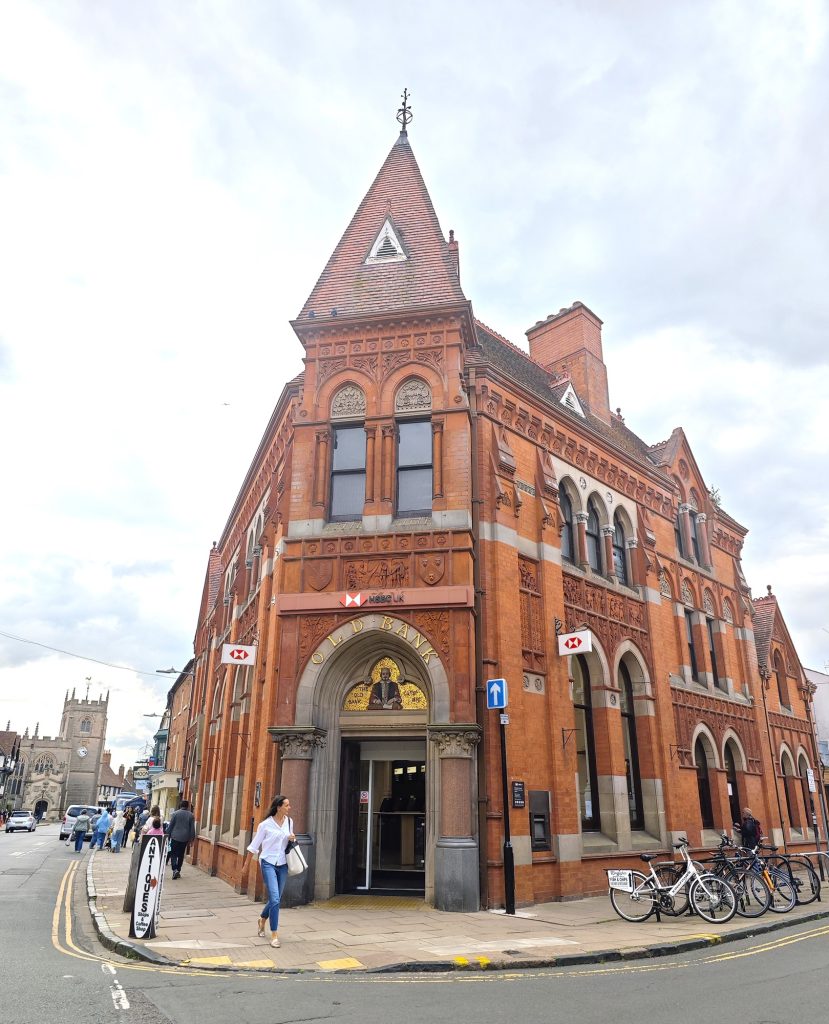
Tudor World
Another very interesting place to visit in the town centre is the Tudor World. It is thought to be the oldest lived-in house in Stratford upon Avon. This award-winning Tudor museum was originally named ‘Shrieve House’ after William Shrieve, who served as an archer to Henry VIII and is the first recorded tenant of the property, taking up residence in 1536. Afterwards it was owned by William Rogers, the real-life person who inspired Shakespeare’s comic Falstaff character. Now ‘Falstaff’s House’ offers visitors a glimpse into the world of the Tudors, from 1483 until the death of Queen Elizabeth I in 1603.

All aspects of Tudor life are covered, from the life of Elizabeth to the devastating effects of the plague. The museum is full of authentically themed recreations of daily life, revealed in a multi-sensory experience through sights, smells, sounds, and interactive displays. Tudor World ,considered to be a haunted house holds Haunted House Tours. Also regular tours of Stratford led by ‘Shakespeare’ himself; a costumed Shakespeare guide takes groups around the heart of historic Stratford, including visits to Hall’s Croft, Nash’s House, Shakespeare’s Birthplace and more.

Not wanting to leave I bid the Bard and his home adieu with a heavy heart….


